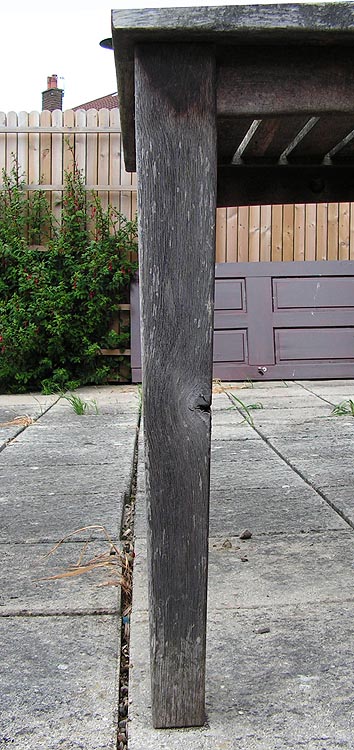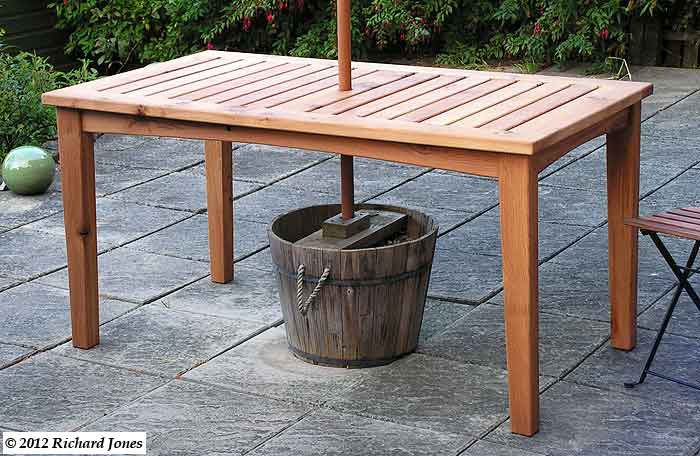Sgian Dubh
Established Member
PS. Did some editing the following day to replace the original image with a better photograph of the dry leg rather than when it was wet.

When made in 2012 or thereabouts, the table looked as below with a lick of boiled linseed oil gashed on just to prettify it up a bit for photographing. The same leg as above is on the near left - the knot gives it away, ha, ha. Slainte.

There is a possibility of that, but the oak leg below has sat on a paving slab for the last seven years or so, and it's certainly gone darker, but it's not noticeably blacker near the foot than elsewhere. This snap I think illustrates the lack of significant colour difference between the foot touching the ground and that part further up: Interestingly, the wood appears darker further up the leg than it is at the foot, which is perhaps surprising. Anyway, I do think it's possible you may be somewhat overstating how black oak can become at the point of ground contact, and spreading upwards from there, in circumstances such as this, certainly in the first ten or fifteen years of an oak item's life in ground contact on a slab of some sort.doctor Bob":3m02mg04 said:May well last but will look horrendous if it sits in water or moisture. May well grey but the part wicking water will just go black.

When made in 2012 or thereabouts, the table looked as below with a lick of boiled linseed oil gashed on just to prettify it up a bit for photographing. The same leg as above is on the near left - the knot gives it away, ha, ha. Slainte.



